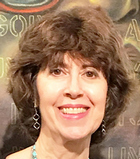Dr. Robert D. Bullard: Justice For Our Children
“Who wouldn’t be against the poisoning of children?”
This was the rhetorical question posed by Dr. Robert D. Bullard during a recent phone interview that I had with him. Our talk covered topics from the genesis of his career as the “Father of Environmental Justice,” to the role that women and mothers have played in the struggle for the health of the planet. As Bullard stated, “Women have been the backbone of environmental justice—and women of color have consistently been fighting for their kids.”
African-American and Latinos have repeatedly found their communities targeted as prime locations for toxic facilities. I reached out to Bullard for an overview on the evolution of the Environmental Justice movement, which has served as a prism through which to examine policy based on race, environment, and waste. Bullard walked me through his work from the 1970s, when he developed the theory of Environmental Justice, to his current role as the Dean of the Barbara Jordan-Mickey Leland School of Public Affairs at Texas Southern University.
In addition to a long list of accolades, Bullard has been recognized as one of “The Century’s Environmental Leaders” (Newsweek 2008). However, when he became the founding director of the Environmental Justice Resource Center (EJRC), he was a solo act with no staff. He was operating with “a phone, a fax machine, and an empty office.” The subject of his early research was Houston, Texas—particularly “Black Houston.” His wife, attorney Linda McKeever Bullard, was spearheading a class action suit in 1979 against the city. It was on behalf of African-American middle-class homeowners who were opposing a proposal to place a municipal landfill in their backyards. She needed information gathering, so Bullard embarked on what he termed “detective work—putting together a puzzle.” He toiled without benefit of computer technology or database formats. His results showed that the city of Houston had a record of placing waste in African-American communities, regardless of income factors.
Dumping In Dixie: Race, Class, and Environmental Quality, Bullard’s 1990 book, became a textbook primer for teaching the underpinnings of Environmental Justice. In it, Bullard illustrated how siting practices have created a full range of health problems in the African-American population as the result of incinerators, garbage dumps, hazardous waste, and chemical plants. Bullard meticulously used research based on science and facts to demonstrate that environmental waste was being located in economically poor and politically powerless neighborhoods. The same year, Bullard built a list of groups doing related advocacy initiatives, which led to the National People of Color Environmental Summit in 1991 and a Principles of Environmental Justice manifesto. His formulations on public policy branched out to the international level, when in 1999 he assisted in preparing environmental racism documents that were presented at the United Nations Human Rights Commission in Geneva.
When we spoke, Bullard expressed his concern about the current atmosphere of ongoing negativity toward the Environmental Protection Agency. He said, “When people demonize the EPA, it’s totally bogus. We need a strong, independent EPA.” Reflecting on what a lapse on enforcing standards could do to the public’s wellbeing, Bullard remarked, “Are we trying to race to the bottom?”
On the issue of “unequal protection,” Bullard emphasized the need of governmental agencies to work together so that “no community becomes a dumping zone.” He was definitive in his stance, “You need a strong Federal presence,” referencing how in too many circumstances, “states have done a lousy job.” Drilling down on the way equity issues impact low wealth communities, Bullard noted that the same neighborhoods that experience toxic sites are also the ones lacking in supermarkets, parks and other quality of life markers. Pointing to a Toxic Waste and Race Report, Bullard observed that of 413 commercial waste facilities, 56 percent were in locations inhabited by people of color. Using the term “clustering,” he pointed to hot spots in California, Texas, and New Mexico—as well as to the urban centers of Detroit, Miami, Washington, D.C. and New York City—that shared similar patterns of toxic release.
Bullard addressed “energy apartheid” and who gets the benefits of clean energy. By example, he defined that it is not solely a matter of who the recipients of coal-fired plants localities are, but how efforts to clean up and move away from coal dependency are conducted. Bullard pointed out the frequency with which the disposal of toxic waste has been relocated to rural areas where the African-American population was dense. In addition, he addressed the need for renewable energy to be implemented fairly, mentioning that “green” schools have been innovated, but unfailingly located in white neighborhoods.
Throughout the conversation, Bullard underscored the ethical component of the environmental equation. To deflect Congressional attacks on the EPA, Bullard advised, “We need to do a better job of educating the public.” Undeterred by proposed set backs to the Clean Air Act or Obama’s walk back on the September ozone standard initiative, Bullard said, “We have to keep working; there’s a lot that needs to be done. We need to position our country as a leader, and put pressure on the powers that be.”
In explaining how children of color were disproportionately affected by ozone, automobile and truck exhaust, coal-fired power plants—putting them on the front line, Bullard circled back to the efforts of mothers in East Los Angeles, reiterating how they had been battling against local incinerators for decades. He also mentioned the ongoing work of Peggy Shepard, executive director and co-founder (1988) of West Harlem Environmental Action (WE ACT), New York’s first organization devoted to improving environmental health in communities of color. Speaking of all youngsters, Bullard said, “If we protect children, we protect everyone. If we don’t, we put everyone at risk.”
His final words to me summed up why mobilizing to ensure and maintain the progress and regulations put into place by the EPA is so essential:
“Writing off an entire generation is not acceptable.”
This article originally appeared on the website Moms Clean Air Force




This a very insighful article. I had the pleasure of meeting and hearing Dr. Bullard at a green wealth forum in Atlanta. I,together with my neigbors, Dr. Yomi Noibi of ECO-Action, and other neighbors of NPU-V are working on The Glenn Street Bridge Project just steps outside of my apartment complex. Thank you for sharing!